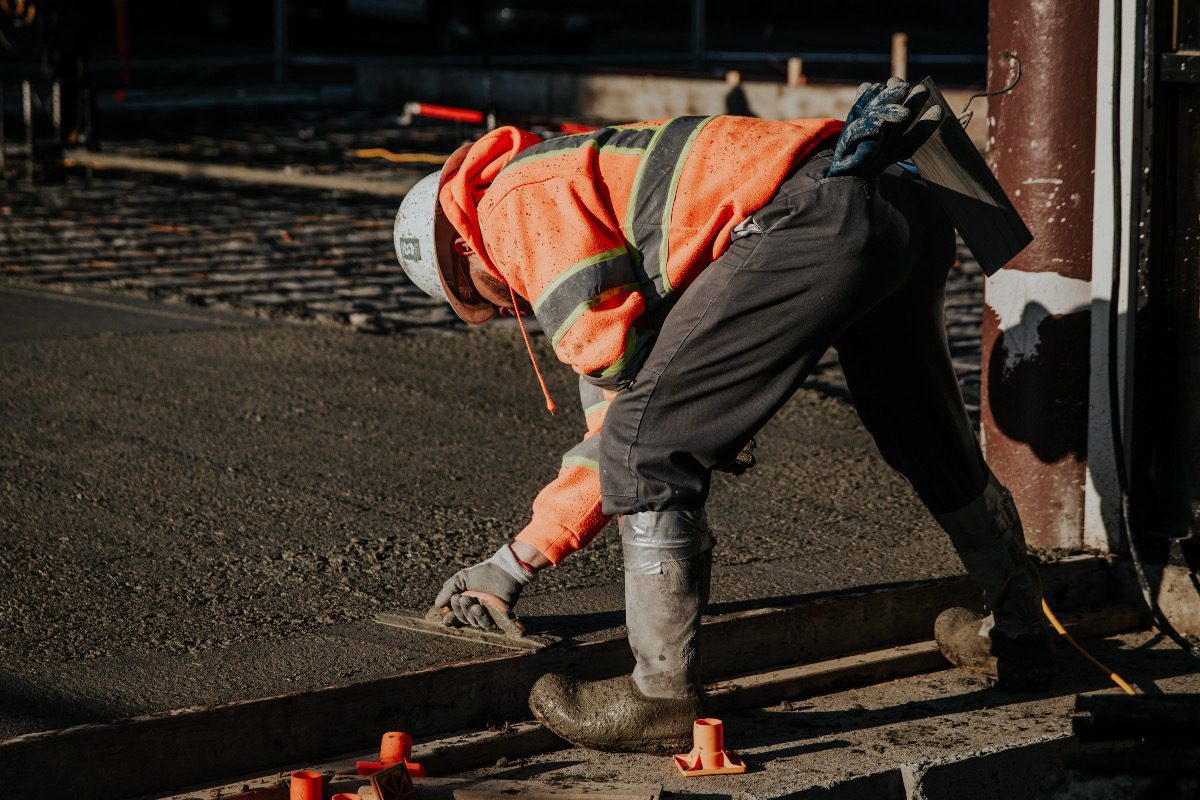The production of cement and concrete has a significant environmental impact. This is primarily due to the massive amount of energy required to heat limestone, the essential ingredient of cement, and the subsequent chemical process it goes through.
The process of making cement produces up to 80% of the cement’s weight in carbon dioxide and contributes to around 5% of yearly human-generated CO2 emissions. Though the white block still requires part of the CO2-emitting fuel used in traditional cement manufacturing, CO2 is also one of the elements used to make it. The cement-like material, which contains around one-third of CO2 by mass, minimizes its carbon footprint by sequestering CO2 inside the completed product.

Concrete, and the cement that holds it together, is the most frequently used substance on the planet, and its use is increasing. The concrete isn’t going away, and therefore, lowering its carbon footprint is becoming a worldwide concern.
New technologies and approaches are being developed to reduce the environmental impact of concrete, including everything from using industrial by-products to reduce cement usage, recycling existing concrete, producing self-healing concretes that reduce the need for new concrete, and developing entirely new materials.
The invention of a Canadian firm
Carbon Cure Technologies, a Canadian firm, has invented a technology that injects waste CO2 into a standard concrete production process, successfully substituting a tiny percentage of cement with CO2 without damaging the strength or integrity of the concrete.
Once in the mix, the CO2 transforms into calcium carbonate, the chemical counterpart of the limestone used in the conventional manufacturing of cement. This technology is a simple addition to the concrete manufacturing process, consisting of a computer system, a waste CO2 tank, and a tube that can inject that CO2 into the concrete mix. Many in the business admit that change is gradual, making it difficult for new material methods to catch on. Despite having a significant carbon footprint, there is no less expensive alternative.
Techniques to Reduce carbon footprints:
Recycling concrete is another technique to lessen its carbon footprint. Researchers at the University of Notre Dame are working on a cost-effective approach for precast concrete producers — concrete molded into a mold and transported to construction sites — to successfully recycle their waste concrete into aggregate and utilize it in the manufacturing of construction beams.
Introducing self-healing concrete – concrete mixes reinforced with different polymers, bacteria, and healing agents that may automatically adapt to cracks — is another strategy for decreasing the need for fresh concrete. None of these techniques, by itself, will eliminate the environmental impact of concrete. However, the more options there are, the more viable the sector may be.
Optimizing Concrete Masonry Design
Efficient masonry designs can significantly reduce the amount of cement required in construction, which directly impacts carbon emissions. By maximizing structural efficiency and reducing material waste, concrete masonry can achieve a lower carbon footprint while maintaining strength and durability.
Utilizing Low-Carbon Cement Alternatives
To reduce carbon emissions using concrete masonry, alternative binders like fly ash, slag, and natural pozzolans can replace a portion of traditional cement. These by-products of industrial processes not only cut emissions but also improve the durability and thermal properties of concrete masonry.
Enhancing Thermal Efficiency of Concrete Masonry
Concrete masonry units (CMUs) offer excellent thermal mass properties, reducing energy consumption in buildings. By designing structures that maximize this thermal efficiency, the need for heating and cooling systems can be minimized, indirectly reducing overall carbon emissions.
Incorporating Carbon-Curing Technologies
Carbon-curing technologies, such as those developed by Carbon Cure Technologies, can be integrated into the production of concrete masonry. By injecting CO2 during the manufacturing process, emissions are sequestered within the concrete, creating a more sustainable material without compromising quality.
Promoting Modular Construction with Concrete Masonry
Modular construction using precast concrete masonry units can reduce on-site waste and construction time. This approach not only improves efficiency but also minimizes the environmental impact by reducing transportation and resource consumption.
Using Permeable Concrete Masonry
Permeable concrete masonry units allow water to pass through, reducing the risk of flooding and improving groundwater recharge. These eco-friendly properties contribute to sustainability while complementing efforts to reduce carbon emissions using concrete masonry.
Supporting Carbon Capture and Storage (CCS)
Concrete masonry can also support carbon capture by incorporating CO2-storing materials into its mix. This innovative approach leverages masonry’s widespread use to actively trap CO2, turning construction materials into carbon sinks.
Educating the Industry and Consumers
Awareness and training programs for builders, architects, and consumers can highlight the benefits of sustainable practices in concrete masonry. Promoting the adoption of low-carbon techniques and materials is essential for reducing carbon emissions industry-wide.
By focusing on innovative technologies and sustainable practices, the construction industry can significantly reduce carbon emissions using concrete masonry. These strategies not only address environmental concerns but also pave the way for a greener, more sustainable future in construction.






















Leave feedback about this